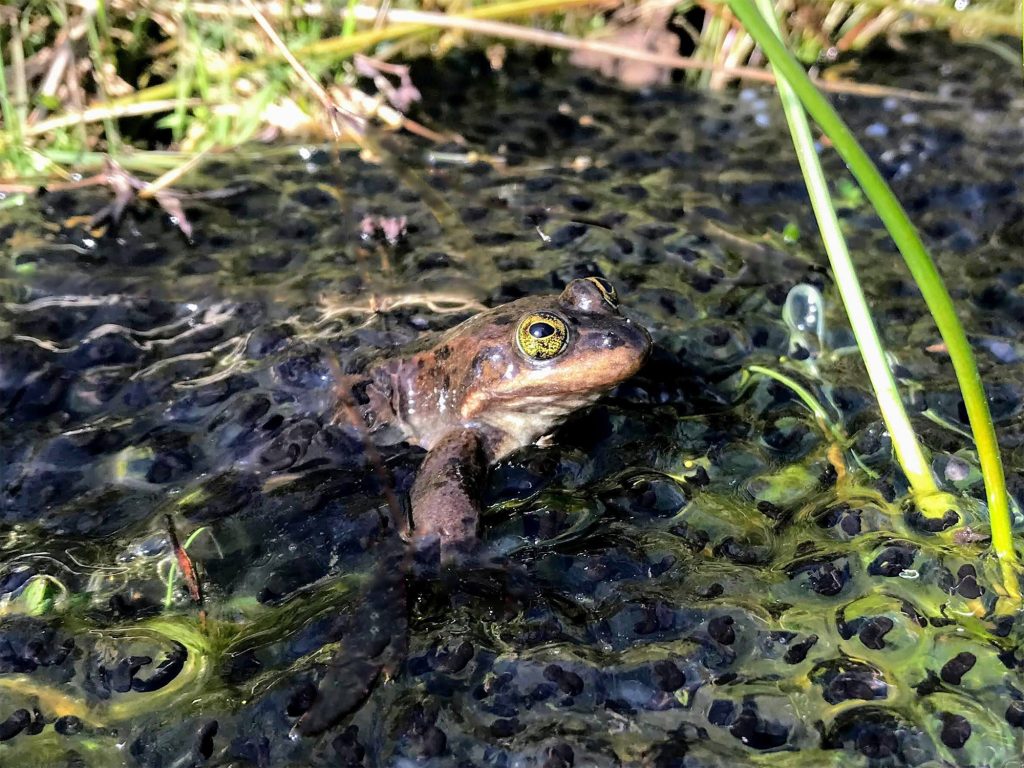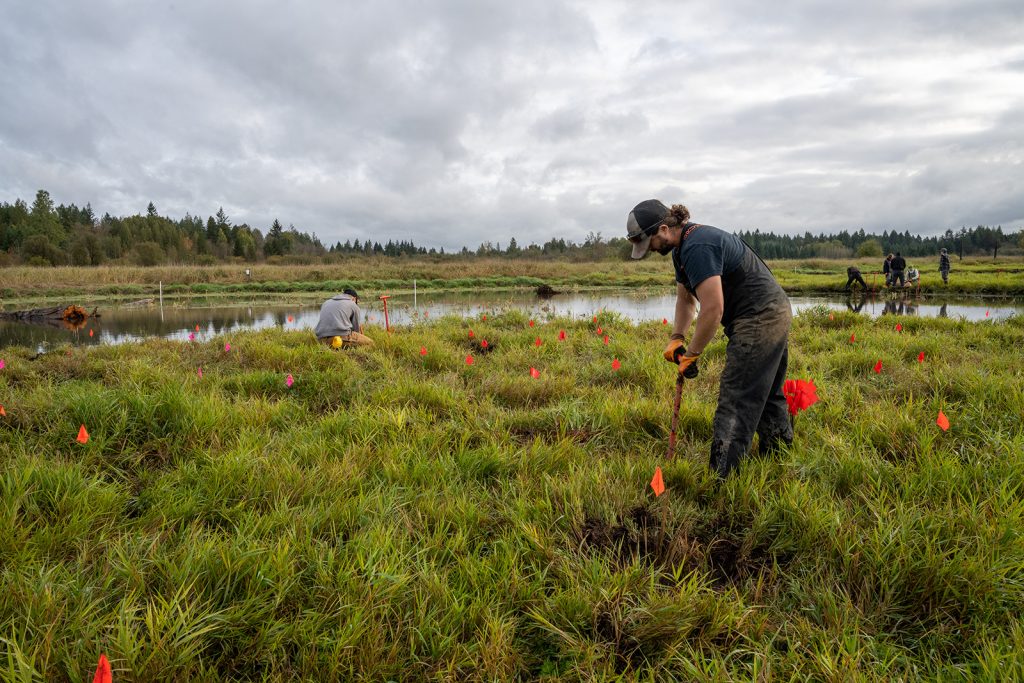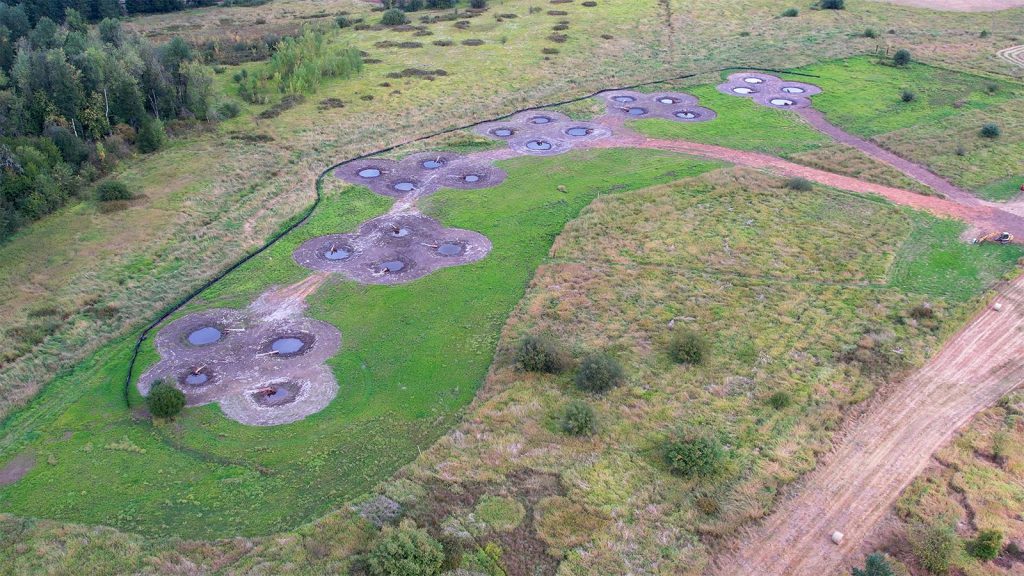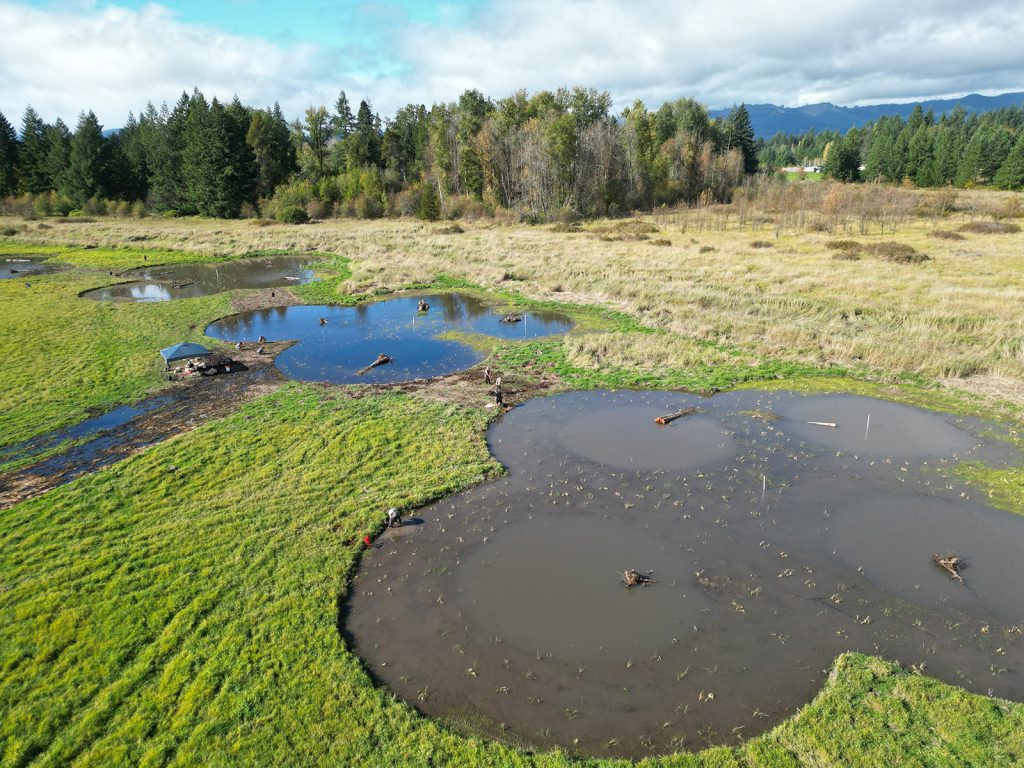As our modern world has developed and expanded, we have unfortunately seen some of our wildlife threatened or wiped out completely. The Oregon spotted frog used to be widespread in our local area, but through human impact, their numbers dwindled down so much that they were thought to be extinct. Luckily, Capitol Land Trust (CLT) rediscovered them on their property in the Black River Watershed area, which is now one of the last strongholds of the species in the entire state. They have been working diligently to develop a vibrant environment that will support the recovery of the Oregon spotted frog.

Capitol Land Trust Work at Blooms Preserve Helps Revive Oregon Spotted Frog
The Oregon spotted frog is federally threatened and on the endangered species list, but for a time there was concern that they were completely extinct. In 2017, Capitol Land Trust discovered one of these long-lost frogs on their property, which birthed a new hope for the species to be restored. To protect and revive the species, CLT purchased the first 60 acres of Blooms Preserve in 2018 and an additional 98 acres in 2020. The team has been working diligently to better understand what has been inhibiting the frogs’ ability to survive and is implementing impactful changes to help them thrive again.
This project was possible due to essential funding to protect these frogs. CLT received two grants from the Recreation and Conservation Office in 2020 for their plans, one called the Aquatics Species Restoration Plan and the other called the Washington Coastal Restoration and Resiliency Initiative. These two grant programs have made an incredible difference in developing a habitat that will support the Oregon spotted frog as the species recovers.

“The Oregon spotted frog recovery project is a pretty big undertaking,” says CLT Conservation Director Laurence Reeves. “Fortunately, we had great support from partner organizations, from initial planning, design, and funding all the way through to project completion. We couldn’t have completed this important project without their expertise and collaboration. I’m very hearted when it comes to valuing the preservation and restoration of our natural spaces, we are not alone in our desire to make a positive difference in the future of this species.”
Environmental Improvements to Blooms Preserve Supports Recovery of Oregon Spotted Frog
Oregon spotted frogs are lifelong water dwellers, complete with webbed feet and eyes atop their head to stay beneath the surface most of the time. They thrive with a wet environment, which made Blooms Preserve an ideal spot for the species to settle. This natural wetland was a healthy ecosystem that was unfortunately disconnected from the flood plain about 100 years ago for agricultural use. Since then, the species suffered without enough waterflow. Now CLT has designed and dug 24 pond clusters to create the necessary spaces for the Oregon spotted frog to lay eggs. These frogs are colonial egg layers, so when one female decides on a great spot to lay eggs, then all of the other females will lay around her. With proper breeding shelves and flooded ponds restored, the species can recover.

The plant life has been another undertaking for CLT to ensure the Oregon spotted frog has a habitat that supports their survival. The area has been heavily infiltrated by reed canary grass, which absorbs a ton of water and creates tall, dense areas that are hard for these sun-loving frogs to get what they need. CLT and Sound Native Plants have been working hard to plant 40,000 plants on the property that nurture the Oregon spotted frog and promote a lively habitat structure for all of the other critters in the ecosystem. The crew of 10 has successful brought in willows, cottonwoods, and shrub species to compete with the reed canary grass, as well as some woody debris and tree stumps to help the frogs to hide from natural predators. So far, CLT is seeing some great improvements and is eager to continue their work.
“We often say conservation is about more than acquiring land,” explains CLT Executive Director Dave Winter. “It’s about preserving, and in some cases restoring, natural system that sustain South Puget Sound’s plants, animals, birds and sea life. With this restoration project at Blooms Preserve, we are helping to reverse habitat loss. Our hope is that the acres under conservation here will provide a sustainable habitat for the endangered Oregon spotted frog and the greater ecosystem they are a part of.”

Donate to Capitol Land Trust to Help Preserve the Oregon Spotted Frog and Other Local Efforts
Capitol Land Trust strategically conserves vital natural areas within the South Puget Sound watersheds and Chehalis Bason. Natural open spaces and properly functioning ecosystems are essential to the exceptional quality of life we enjoy in our region, even for smaller creatures like the Oregon spotted frog. To help make a difference, you can donate your time as a volunteer or contribute financially. Get involved by becoming a volunteer or making a donation on their website and help save the Oregon spotted frog amongst other local efforts.

The work done at Blooms Preserve would not be possible without the amazing community partners bringing their expertise to save the Oregon spotted frog. Special thanks to: Black Hills Audubon Society, Center for Natural Lands Management, Doris Duke Charitable Foundation through the Nature Conservancy, Salix Environmental Services, Sound Native Plants, Streamline Earthworks, Thurston County Conservation Futures, U.S. Fish & Wildlife Service, Waterfall Engineering, Washington Department of Fish & Wildlife, and Washington Salmon Recovery Funding Board. Much of this project is also largely due to the hard work of Capitol Land Trust supporters and volunteers, specifically Tom Terry, Ian Stoner, Doug Ryan, Mike Melton, and Claudine Reynolds.


















































